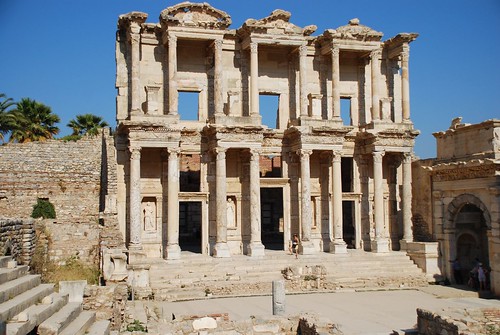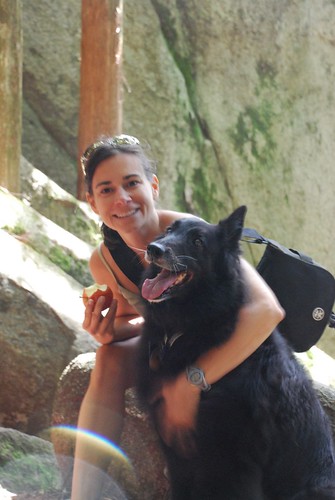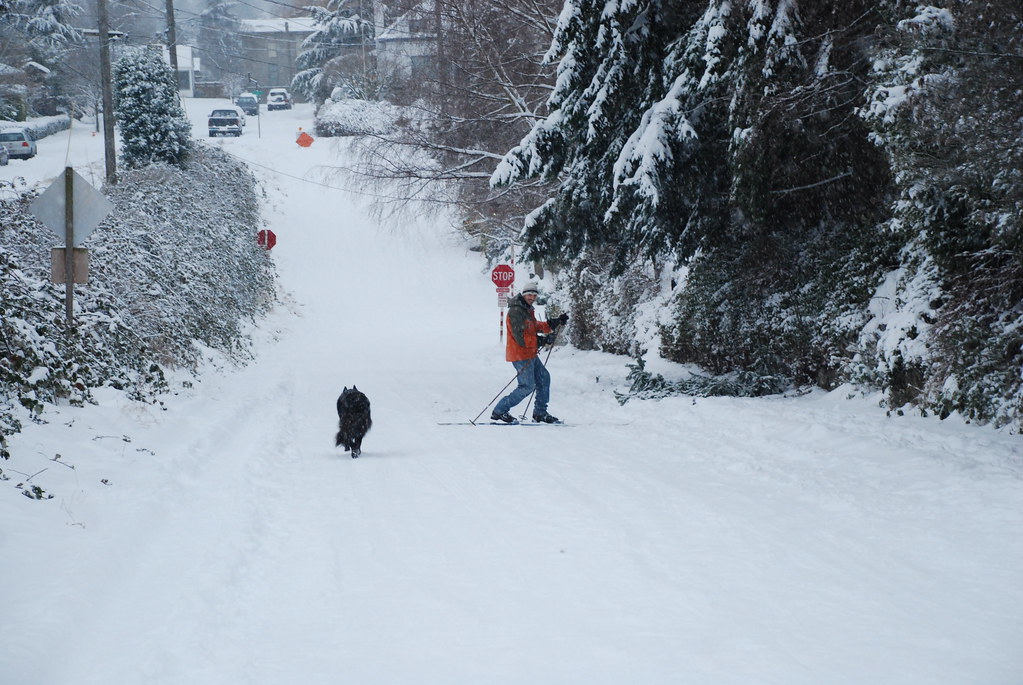 Diana and I have been through a few mountain ranges in our time. The North Cascades, even though it is in our backyard so-to-speak, surprises us every time we go through it. Dramatic peaks, snowfields, lakes, insane quiet, and right now not many other humans around—is there a better place on earth? Our first morning after leaving Seattle we woke up from our camp, drove a little bit into the mountains, and pulled off and hiked to here.
Diana and I have been through a few mountain ranges in our time. The North Cascades, even though it is in our backyard so-to-speak, surprises us every time we go through it. Dramatic peaks, snowfields, lakes, insane quiet, and right now not many other humans around—is there a better place on earth? Our first morning after leaving Seattle we woke up from our camp, drove a little bit into the mountains, and pulled off and hiked to here.Not bad for a post hectic button-up-the-joint and get-on-the-road craziness campaign. Yeah, life’s been a little…well…I can’t remember lately. The mind’s a tad off let’s just say. We’re talkin’ touch down from Turkey, pack all of your junk (i.e., possessions) into some crates, try to sew up the loose ends, cross yer fingers, chant to the gods, comb the hair and start the motor cuz’ you can plan and worry yourself into compulsion. We dropped the keys to our temporary apartment in the drop-box, gave a forwarding address, said thank you very much we’re leaving now, turned onto I-5 north, and began the homeless life that is now officially the start of our road-trip. Yeah, I know, everything before was just a rehearsal. We’ve got our good clothes on.
Seriously, this is the first time since we started this so-called road-trip where I’ve felt, okay, we’re doin’ it. Before it was a week in Squamish, straight to another country for over 2 weeks, then get home and store your things away for the next 9 months. THEN the actual trip will begin. And so it has. And just like the rest of the country felt when Gonzales resigned, we’ve let out a huge WHEW. Good thing that’s over.
Here in the North Cascades, the remoteness of these mountains, the magnitude of their sheerness, and the deafening quiet, separate this range from many others in the U.S. We hiked up today to a ridgeline giving us views of Glacier Peak and the neighboring ridge with a name probably like Desperation Arm or something. That’s the way it is here. The names to the mountains, the ridges, even the lakes sometimes take on a dramatic horror like Dead Horse Ridge, Starvation Mountain, and Death Soon Canyon. My gut tells me the crooked prospectors that clawed their way up here back during the gold rush gave these names to keep others out. And thank ‘em for it. But maybe there is some truth to the names. Who knows. All I know is that rambling about these mountains, often with too little food and water, til you’re tired and hungry but stuck on the views, is a life worth living. There ain’t nothing better than coming down from a high mountain lake (after a dip of course), legs on fire, starving, and settling back into camp, muscles aching, rolling up in a blanket, a warm cup of tea, a book, and reading yourself into a stupor. You’re tired, dead horse tired, and there’s nothing like knowing that soon you’ll fall into the dark land of nod oblivion, a black sleep, dreamless, uninterrupted and deep. Beyond that, can you ask for anything more?
Speaking of sleep it’s about time I turn in. The sun’s setting behind the ridge over yonder and the old bones are a croakin’.
Maybe I won’t keep up this blog anymore. Maybe I’ll just settle in and enjoy the peace. Afterall, can I really convey this place? Will words work now? Sure, they worked to tell about all that historical business in Turkey. But will they suffice an alpenglow sky? The roar of the clear river through the trees? The raven calling through beams of golden light? Probably not. Let’s let them rest awhile in the quiet where they belong. Words sometimes muddy up the place and right now I’m enjoying the clarity of a high mountain nothingness. Wish you were here.






